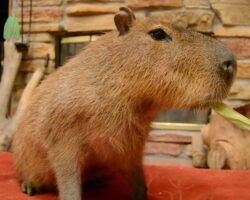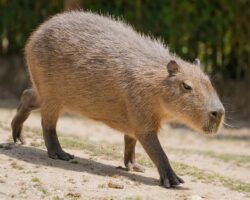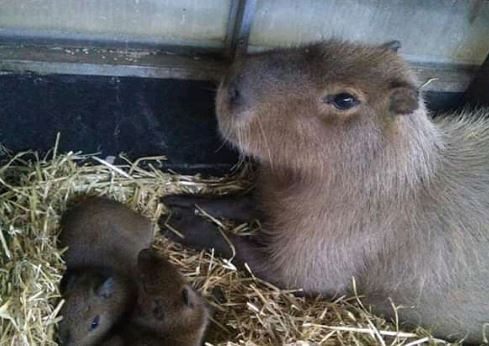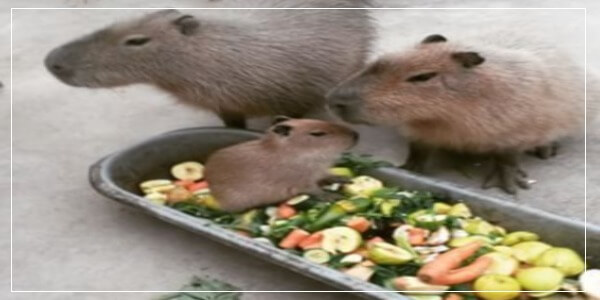Can Capybaras Eat Rice?
As the largest rodents in the world, these semi-aquatic creatures have captured the imaginations of many people around the globe. However, when it comes to their diet, there is often confusion about what foods are safe and appropriate for capybaras to eat. One food that is often questioned is rice. Many people may wonder, can capybaras eat rice? While rice may seem like a harmless and healthy food for humans, it is important to explore whether it is a suitable food source for these large rodents. In this article, we will dive into the topic of capybara nutrition and explore whether rice is a viable option for their diet.
Nutritional Requirements of Capybaras
Capybaras are herbivores, which means their diet consists entirely of plant-based foods. They require a diet that is high in fiber, low in fat, and moderate in protein. Their natural diet typically includes a variety of grasses, aquatic plants, fruits, and vegetables.
While rice is not a typical food for capybaras in the wild, it can be a valuable source of nutrition if given in moderation. Rice is a good source of carbohydrates, which can provide capybaras with the energy they need to sustain their active lifestyle. It also contains some essential vitamins and minerals, such as vitamin B and iron.
However, it is important to note that capybaras require a diverse diet to meet all of their nutritional needs. Simply feeding them rice alone would not provide them with the full range of nutrients they require. In fact, feeding them too much rice could potentially lead to health problems, such as digestive issues or obesity.
Therefore, while rice can be included as part of a capybara’s diet, it should not be the main component. A balanced diet for a capybara should consist of a variety of plant-based foods, including hay, vegetables, fruits, and grasses. It is also recommended to provide them with supplements to ensure they are getting enough vitamins and minerals.
While capybaras can eat rice, it should be given in moderation and as part of a balanced diet. It is essential to understand their nutritional requirements and provide them with a diverse range of foods to ensure they stay healthy and happy.
Capybara Diet in the Wild
Capybaras are often found in the wetlands, grasslands, and forests of South America. In their natural habitat, they have access to a variety of plant-based foods that make up their diet. Their eating habits can vary depending on the season, location, and availability of food sources.
Capybaras are primarily herbivores and graze on a variety of grasses, aquatic plants, and other vegetation. They are also known to consume fruits, such as guava and watermelon, as well as vegetables like sweet potato and corn. In the wild, they may also eat bark, twigs, and leaves from trees and bushes.
Capybaras are considered opportunistic feeders, which means they will eat whatever food sources are available to them at any given time. They have a unique digestive system that allows them to break down tough plant materials, such as cellulose, through a process of fermentation in their large intestines. This enables them to extract nutrients from plants that other animals cannot digest.
Capybaras are social animals and often feed in groups. They may forage for food during the day or night, depending on their environment and the availability of food sources. When foraging, they may use their sharp incisors to cut through vegetation or dive into the water to reach aquatic plants.
Although, they have a varied diet that consists primarily of grasses, aquatic plants, and other vegetation. They are opportunistic feeders that will eat whatever food sources are available to them. Their unique digestive system allows them to extract nutrients from tough plant materials that other animals cannot digest. Understanding the eating habits of capybaras in their natural habitat can help us provide them with a suitable diet in captivity.
Rice as a Potential Food Source for Capybaras
While rice is not a typical food source for capybaras, it can be used as a supplementary food source to meet their dietary needs. However, there are both benefits and drawbacks to feeding capybaras rice.
Benefits:
- Energy source: Rice is a good source of carbohydrates, which provide energy to capybaras to sustain their daily activities.
- Easy to digest: Rice is easily digestible by capybaras, making it an ideal food source for animals with sensitive digestive systems.
- Convenience: Rice is a readily available and inexpensive food source, making it a convenient option for capybaras.
Drawbacks:
- Insufficient nutrient content: Rice does not contain sufficient amounts of essential nutrients required by capybaras such as protein, vitamins, and minerals. Therefore, rice cannot be the sole food source for capybaras and should be used in combination with other nutritious foods.
- Health risks: Rice can cause health problems in capybaras if fed in excess. Overconsumption of rice can cause obesity, digestive issues, and other health complications.
- Rice quality: Rice quality plays an essential role in determining its nutritional value for capybaras. Poor quality rice may contain contaminants or impurities, which can lead to health issues in capybaras.
Rice can be a potential food source for capybaras when used in combination with other nutritious foods. However, it should not be the sole food source, and its quality should be carefully considered to ensure the health and well-being of capybaras. It is always best to consult with a veterinarian or animal nutritionist to determine the appropriate diet for capybaras in captivity.
Domestic Capybaras and Their Diet
Capybaras require a diet that is high in fiber and low in fat, with a variety of fresh fruits, vegetables, and grasses.
Domesticated capybaras have similar dietary needs as their wild counterparts. Their diet should consist of hay or fresh grass, vegetables such as carrots, celery, leafy greens, and fruits like apples and bananas. They also need access to fresh, clean water at all times.
Rice is not a necessary part of a capybara’s diet, but it can be given as an occasional treat or supplement. Cooked brown rice is a good source of carbohydrates and can provide additional fiber, but it should not make up a significant portion of their diet. Capybaras should not be fed any type of processed foods, sugary treats, or animal products, as these can be harmful to their health.
It’s important to note that while capybaras make interesting and unique pets, they require specialized care and attention. Before considering bringing a capybara into your home, make sure to research their specific dietary and environmental needs and ensure that you can provide for them properly.
Feeding Capybaras in Captivity
Capybaras primarily feed on grasses, aquatic plants, and fruits in the wild. In captivity, their diet should mimic their natural diet as closely as possible to ensure their health and well-being.
The diet of capybaras in captivity should consist of high-quality grass hay, fresh vegetables, and fruits. They also need a source of vitamin C, which can be provided through foods such as oranges, strawberries, and bell peppers. Pellets formulated for guinea pigs or rabbits can be offered as a supplement, but they should not make up the majority of their diet.
Rice is not a suitable addition to the diet of capybaras as it lacks the necessary nutrients and fiber they require. Overfeeding capybaras with high-calorie or high-carbohydrate foods such as rice, bread, or other processed foods can lead to obesity, dental problems, and other health issues. On the other hand, underfeeding can lead to malnourishment and health problems. It’s important to provide capybaras with a balanced and varied diet that meets their nutritional needs.
Additionally, access to clean water is crucial for capybaras as they require water to regulate their body temperature and aid in digestion. They should have access to a shallow pool or large water bowl to soak in and drink from.
It’s recommended to consult with a veterinarian or a qualified animal nutritionist to create a suitable diet plan for capybaras in captivity.
Conclusion
capybaras are known to be herbivores, which means that they mostly feed on grass, fruits, and vegetables. However, they can also consume other foods such as rice, as long as it is given to them in moderation. While rice may not be a part of their natural diet, capybaras have been observed eating rice in the wild as well as in captivity.
It is important to note that capybaras should not be fed large amounts of rice or any other human food, as it can lead to digestive issues, obesity, and other health problems. Additionally, it is always recommended to consult with a veterinarian or a professional animal nutritionist before feeding any new food to your capybara or any other animal.
Overall, while capybaras can eat rice, it should be offered as a treat and not as a staple in their diet. As with any animal, providing a balanced and appropriate diet is key to ensuring their health and well-being.



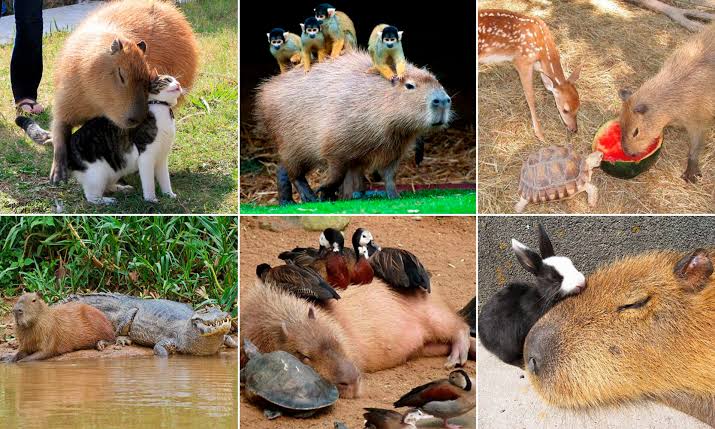
![How Long Do Capybaras Live? - [Answered] How Long Do Capybaras Live](https://capybaratips.com/wp-content/uploads/2023/03/Capybara-Pix-250x200.webp)
![Why Do Capybaras Not Have Tails? - [Answered] Why Do Capybaras Not Have Tails](https://capybaratips.com/wp-content/uploads/2023/03/Capy-Tail-250x200.webp)
